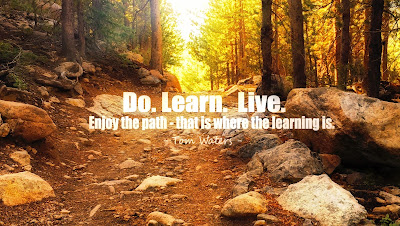Navigating those Crucial Conversations
Can you think of it? That person and conversation? Okay. Let's look at 4 strategies that will help you.
Also, here's more on "Candor in Crucial Conversations"
First, there are plenty of resources on holding difficult, crucial, challenging, and complex conversations. The books and articles are out there because we all recognize the cost. The cost of not holding the conversation is greater than the potential conflict that could occur in the discussion.
There are mindsets, approaches, and ideas for minimizing any conflict that could occur from a tough talk. But, does it really have to be a tough talk?
Conversation Can Create a Win-Win
Usually there's a problem, perceived behavior, or possible conflict that urges you to hold the talk. But that doesn't mean anyone has bad itentions. It also doesn't mean that anyone has to lose as a result of the conversation. To create a win-win in the conversation there are 3 things to remember:
1. Exploration is less Threatening than Inquisition
You already know dictating and lecturing is not the way to go about having a touchy talk. Use carefully-crafted questions to open up a discussion. Do not use a battery of right/wrong or accusatory questions to interrogate the person you are talking with.
With good questions, you can explore the topic of concern. Even better, you probably will both discover some underlying causes or grievances. When addressed appropriately, these discoveries can strengthen relationships and work productivity.
2. Prepare Yourself for the Conversation
What fears and emotions do you think this conversation will trigger in you? The more emotional you are during a conversation, the easier it is for the discussion to go off-track. You might not get the results you are hoping for.
Think about the emotions and perceptions of the other person? What response do you anticipate? Thinking this through can help you craft questions that will ease the other person's emotions. This can yield a more productive talk.
3. Be Clear about the Conversation
Don't call it a "chat" when the nature of the discussion is much more serious. Avoid quoting policy and other authority when you haven't adequately determined the need. Be upfront about the purpose and topics to be discussed without being heavy-handed. This can give the other person time to process and be more at ease before the conversation begins.
During the conversation be clear. Avoid vague statements and generalities. Simply ask, "Is it okay if I am direct and honest?" Then be direct, but kind. Also clarify, "It's okay for you to be honest with me. We are going to work through this topic together."
4. Listen First, But Narrow it Down
The world may be your oyster, but that oyster is too large for a single talk. Open-ended questions are good, but narrow it down and listen. For example:
"I'd like to talk about___, but first I want to hear what you think."You could also ease tension by narrowing in on the conflict:
"I think we might have different ideas on ___, but we've never talked about it. What are your thoughts?"
What Advice do School Leaders Have on Crucial Conversations?
#Leadupchat recently discussed this topic, and the ideas were excellent. Here are my top 5! I hope they help you process the challenges associated with leadership.
Conversations Outperform Emails and Memos
We do not change our school culture through emails and memos...we change it one conversation at a time. -Danny Steel @SteeleThoughtsAn email is not two-way. It can be unclear. It has no body language. It often confuses emotions. The difficult part of a conversation is the emotion and conflict. An email or memo cannot account for these difficulties. It can make them worse.
Be Courageous in your Conversations
When we avoid difficult conversations we trade short-term discomfort for long-term dysfunction. -DrTamySmalskas @Lead4KidsDrSThe students deserve it. It is not about us and the discomfort we go through. It is about the students. With good preparation and carefully-crafted questions, you can navigate the discsussion and avoid any harm. The new discovery, strengthened relationship, and increased productivity will far outway the emotional cost.
If You Lead, You Will Have Conflict
If you don't have some pushback to ideas, maybe something's wrong. Crickets and all agreement could signal fear to voice. -Jeff Veal @heffreyGrowth and change can be challenging. Ideas are pressed. Habits are stressed. People are stretched. You should experience pushback. That's normal. It also gives you balance. In a conversation, it can provide fresh insight and discovery. Use pushback as a reflection point, and then hold a follow-up to gain further clarify for both parties.
I hope you enjoyed this post on navigating those crucial conversations. You might also enjoy reading How are you Motivating Your Campus this Week?





Comments
Post a Comment
What are your thoughts?